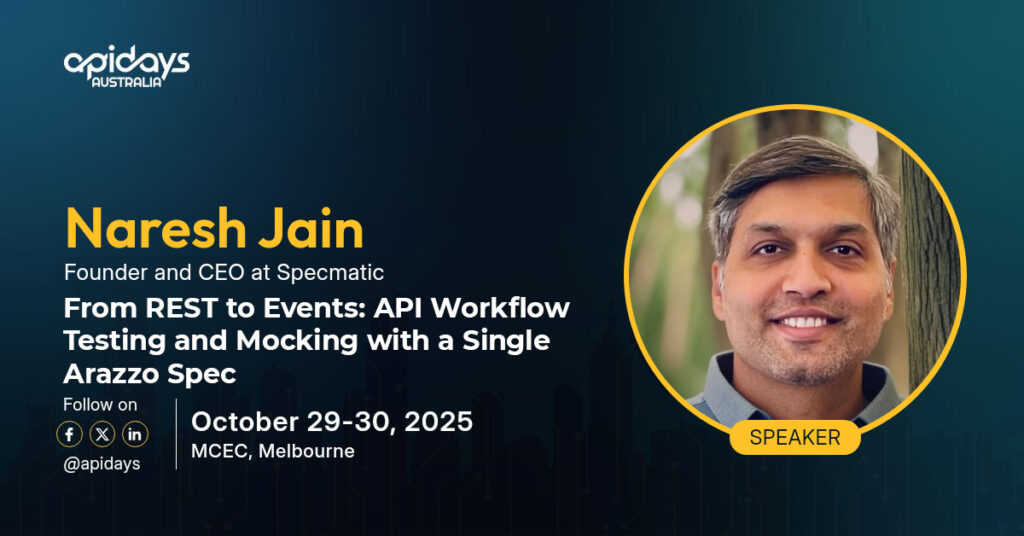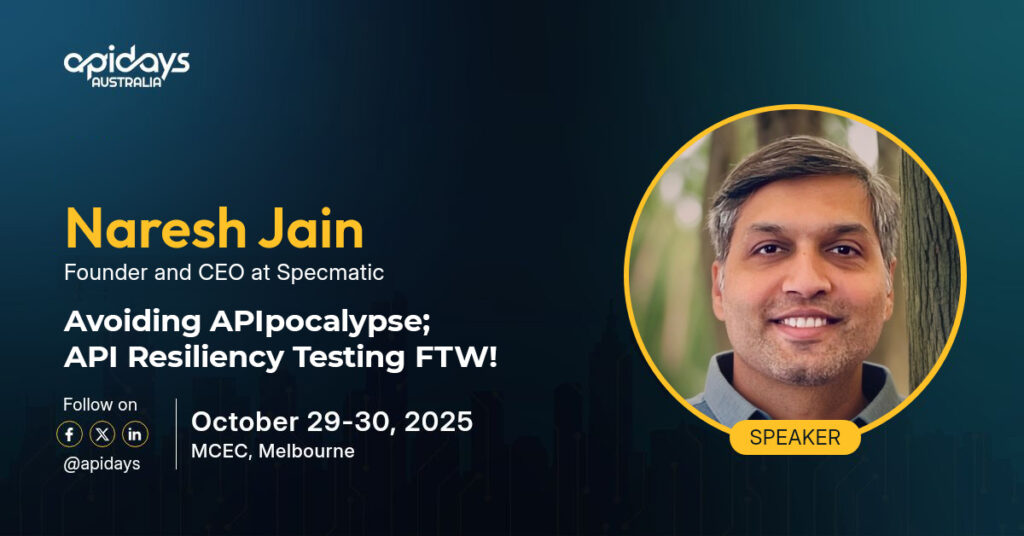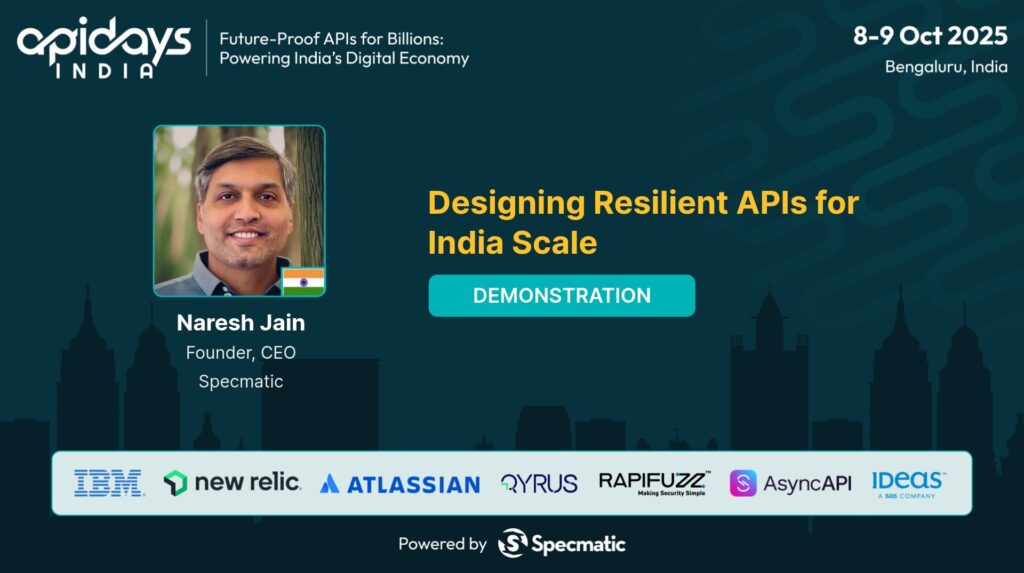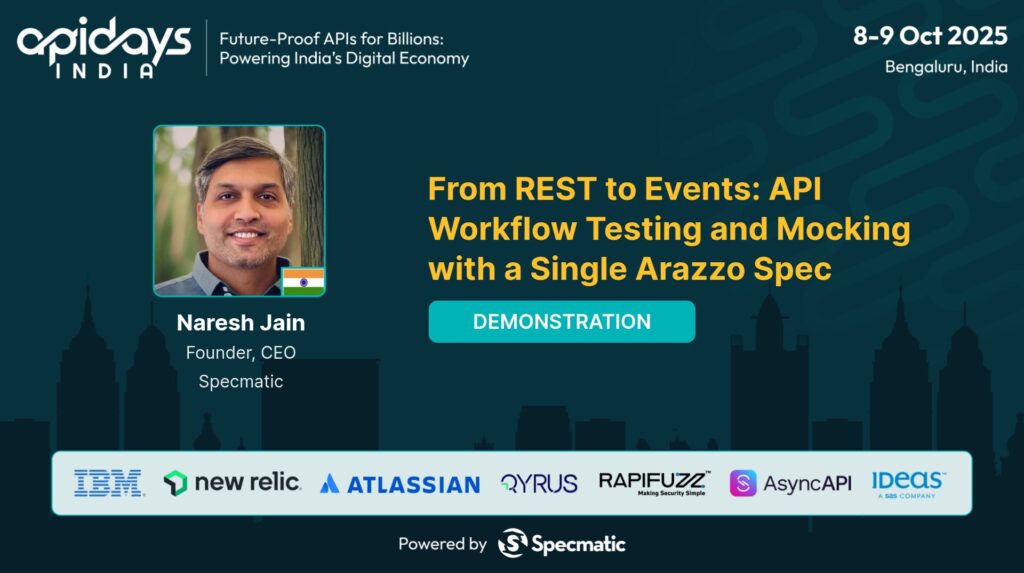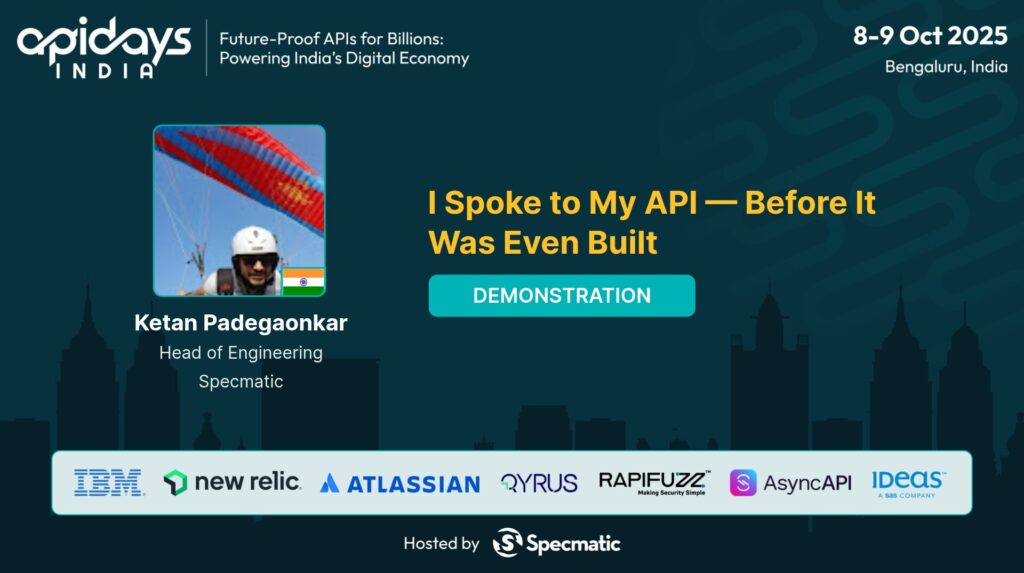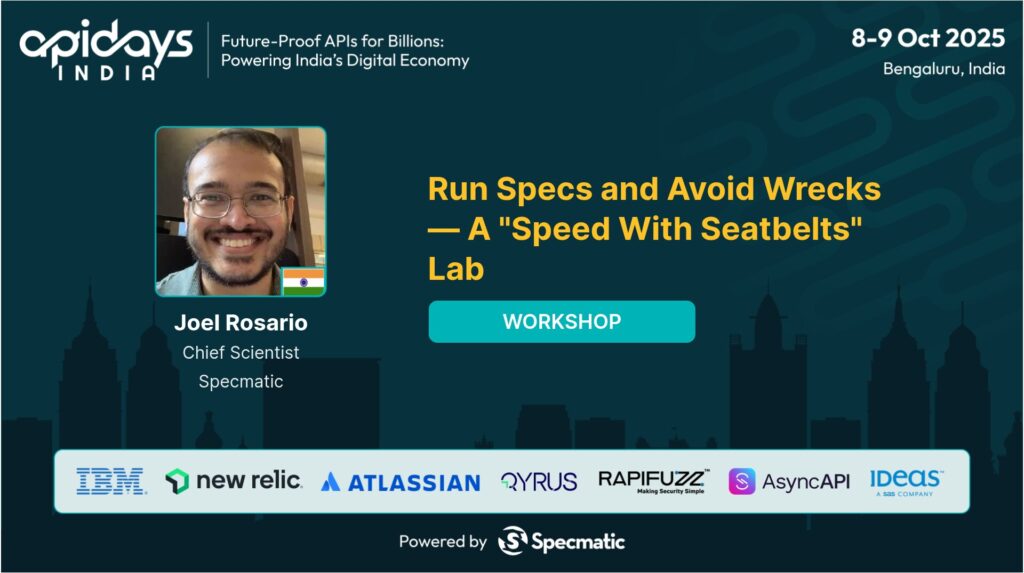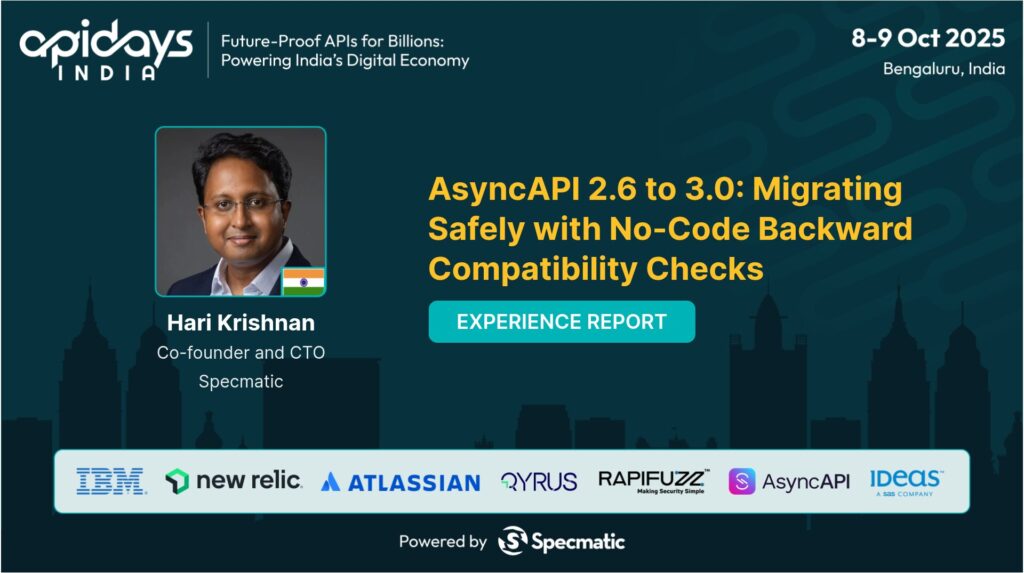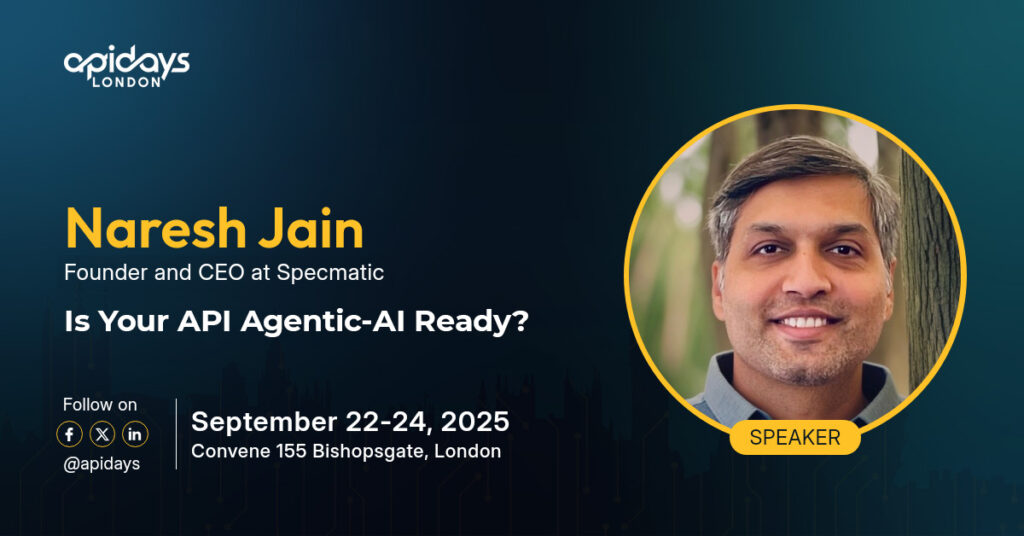10x DevEx – Shift Left API Governance
27 Mar 2025
Bengaluru, India
Summary
APIs are the backbone of modern software applications, enabling seamless integration and data exchange between various systems and services. However, as the number of APIs continues to grow exponentially, managing their interop and governing their compliance becomes a critical challenge. Traditional API governance approaches are usually relying on manual processes and often lag behind development cycles, leading to release delays, inconsistencies, and increased technical debt.
This real-world experience report will share a set of transformative strategies that helped us elevate our DevEx by an order of magnitude, while simultaneously helping us shorten our cycle times by 75%.
We delve into the principles of “shift-left” API governance, a proactive approach that integrates governance early in the development cycle, ensuring faster, more secure, and compliant API integrations. By starting with a collaborative API Design first approach followed by contract testing in service provider’s CI pipeline, teams can identify and mitigate risks sooner, streamline workflows, and foster a culture of collaboration, accountability and innovation. This helps them unlock unprecedented developer productivity and accelerate their release cycles.
Join us for an enlightening session that promises not only to inspire but also to equip you with practical tools, practices and insights to revolutionize your API design, development and governance strategy. Whether you’re a developer, a technical leader, or a product manager, this talk will provide valuable perspectives on enhancing DevEx, streamlining governance, and achieving remarkable efficiency gains.
Transcript
10x DevEx – Shift Left API Governance: Elevating Developer Experience and Accelerating Delivery
APIs are the backbone of modern software applications, enabling seamless integration and data exchange between various systems and services. However, as the number of APIs continues to grow exponentially, managing their interoperability and governing their compliance becomes a critical challenge. Traditional API governance approaches often rely on manual processes that lag behind development cycles, leading to release delays, inconsistencies, and increased technical debt.
In this comprehensive article, we explore transformative strategies to elevate developer experience (DevEx) by an order of magnitude while shortening cycle times by 75%. Central to this approach is the principle of shift left API governance, a proactive methodology that integrates governance early in the development process. By embracing an API design-first approach combined with contract testing in continuous integration (CI) pipelines, teams can identify and mitigate risks sooner, streamline workflows, and foster a culture of collaboration, accountability, and innovation.
This article draws on real-world experience and insights to provide practical tools, practices, and perspectives on revolutionizing API design, development, and governance strategies. Whether you’re a developer, technical leader, or product manager, you’ll gain valuable knowledge to enhance DevEx, streamline governance, and achieve remarkable efficiency gains.
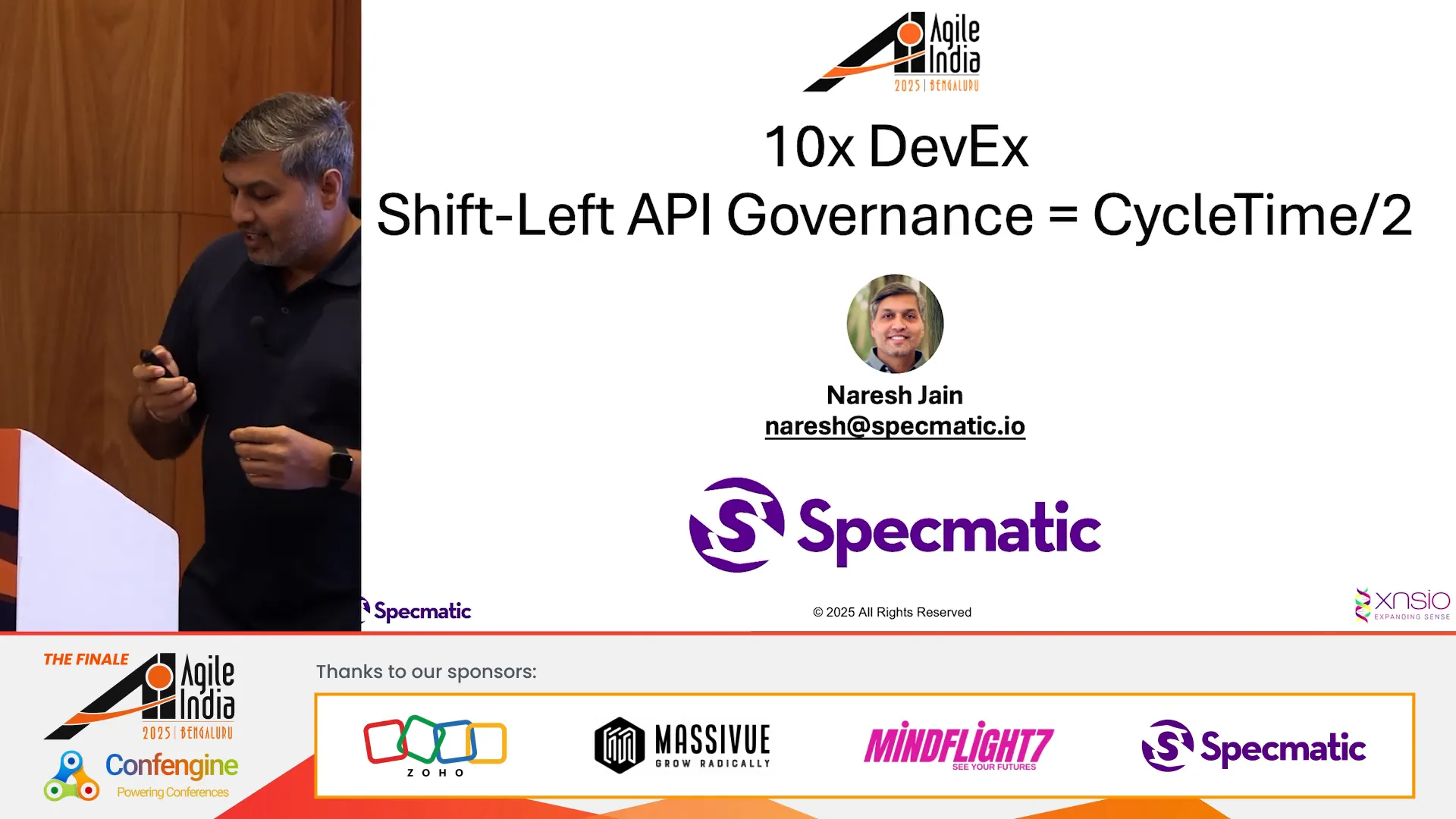
Table of Contents
- The Misconception Around API Tooling and Developer Experience
- Contract Testing: Closing the Gap Between API Spec and Implementation
- REST and OpenAPI: Are They Any Better?
- The Promise of AI-Driven API Development
- Contract-Driven Development: A Practical Approach to Shift Left API Governance
- Why Existing Tools Like Pact May Not Suffice
- Essential Criteria for a Practical API Contract
- Real-World Challenges Driving the Need for Shift Left API Governance
- Introducing Specmatic: Bridging the Gap
- Summary: The Path to 10x Developer Experience with Shift Left API Governance
- Frequently Asked Questions (FAQ)
The Misconception Around API Tooling and Developer Experience
Many developers assume that API development is inherently painful and have come to accept it as the norm. This acceptance often stems from limitations and frustrations with existing tools and frameworks. To illustrate this, let’s start by examining some of the common API technologies and their developer experience challenges.
gRPC: Promise vs. Reality
gRPC has rapidly gained popularity, especially in India, for its promise of superior developer experience through strong schema enforcement, type safety at compile time, and auto-generated client-server code across multiple languages. Protobuf definitions enable shared contracts between services, and built-in support for backward and forward compatibility aims to prevent many integration issues.
At first glance, gRPC seems like the perfect solution for contract safety and developer experience. Consider a proto file defining three RPC methods:
- FindAvailableProducts: Takes a request and returns a list of products.
- CreateOrder: Takes order details and returns an order ID.
- CreateProduct: Takes product information and returns the product ID.
The new product message includes fields like name, type, and inventory, with type being an enum.
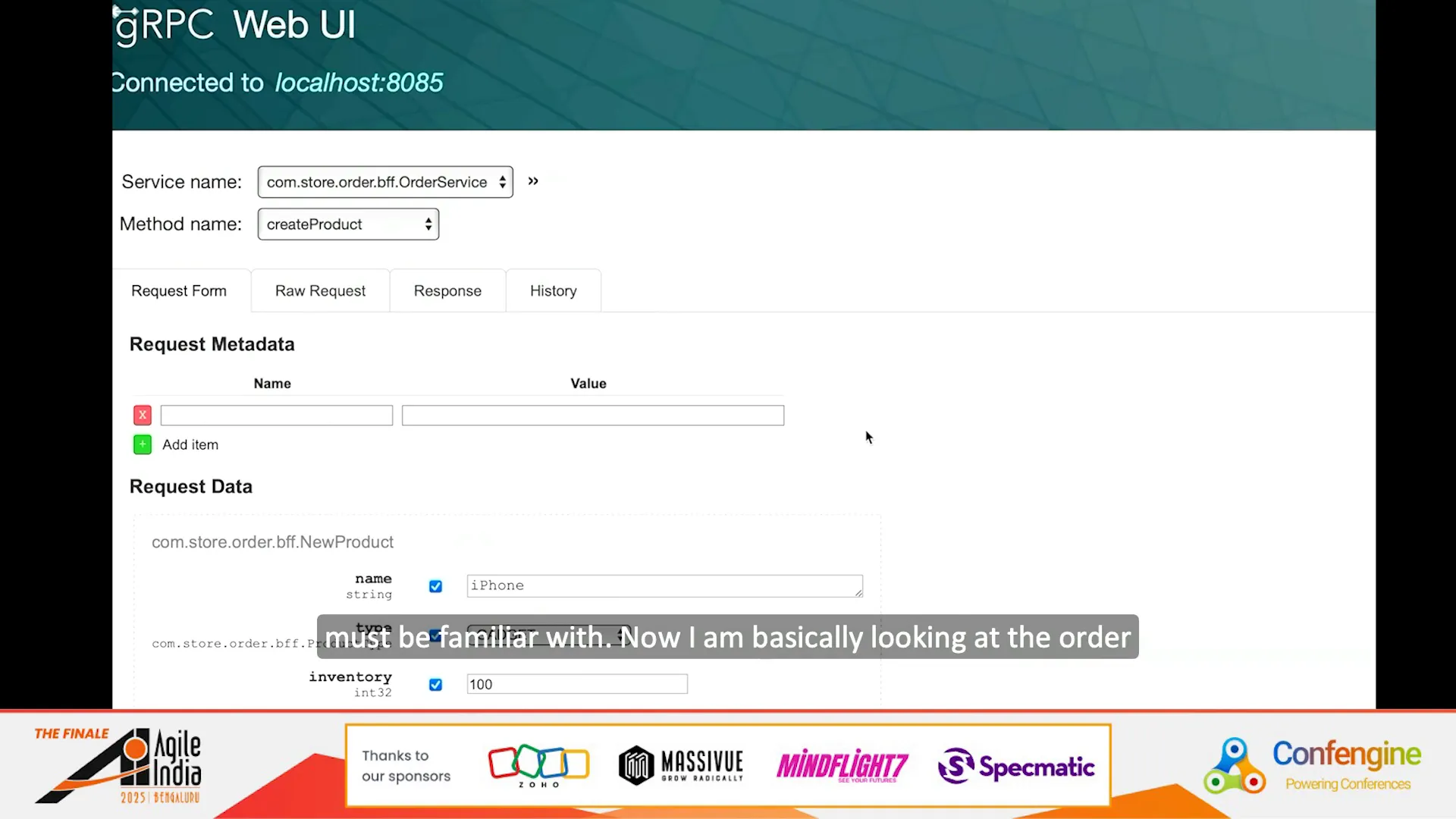
Using the gRPC web UI, you can create a product like “iPhone” with type “gadget” and inventory “100” and get a successful response. However, what happens if you send an empty request with no fields provided?
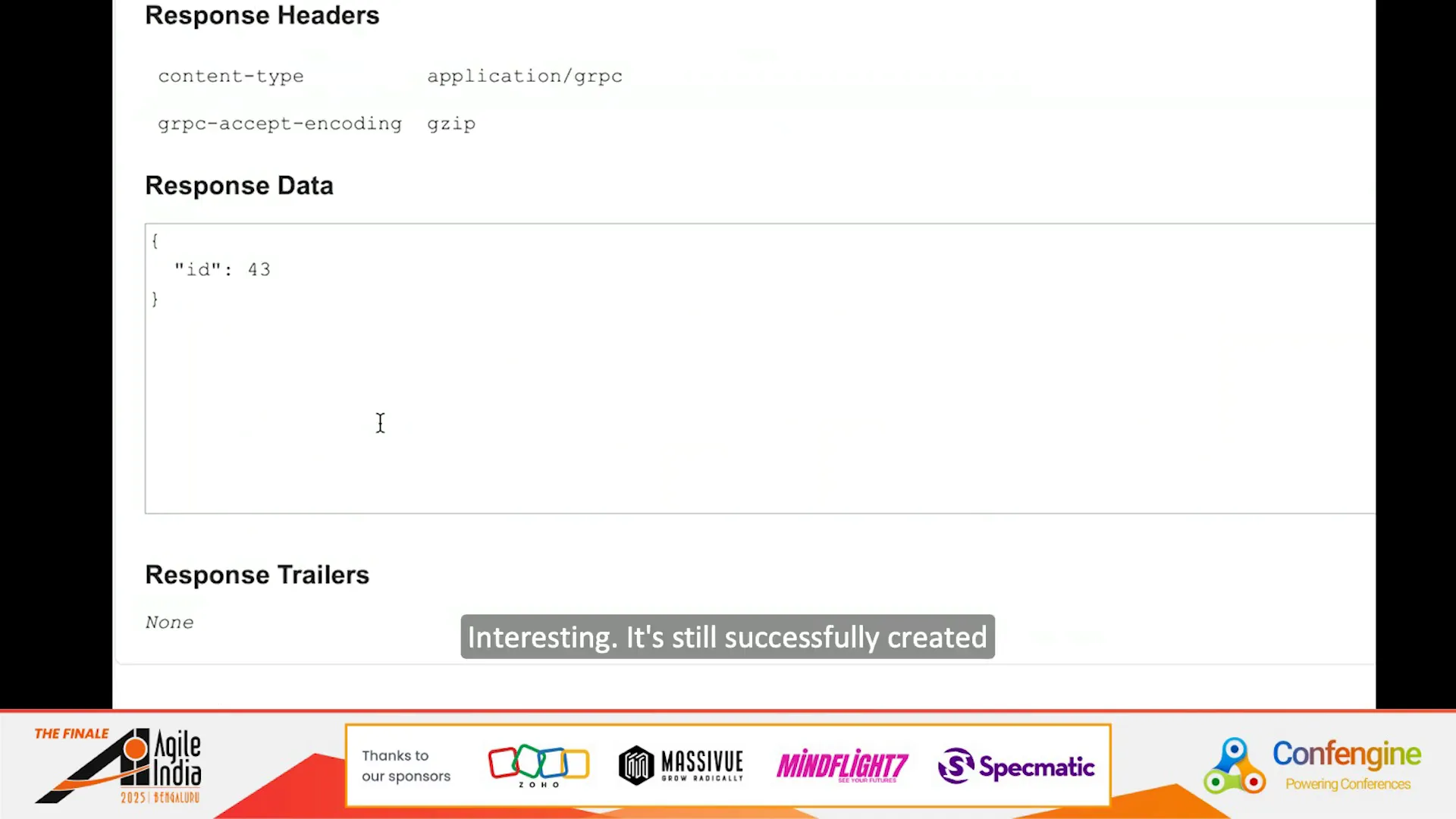
Surprisingly, the product is still created successfully despite missing mandatory fields. This highlights a significant gap in developer experience with gRPC: there is no built-in enforcement of mandatory parameters. While libraries like buf validate exist to add validation rules, they are add-ons rather than native features.
By using buf validate, you can declare fields like name and type as required, improving validation and preventing empty requests:
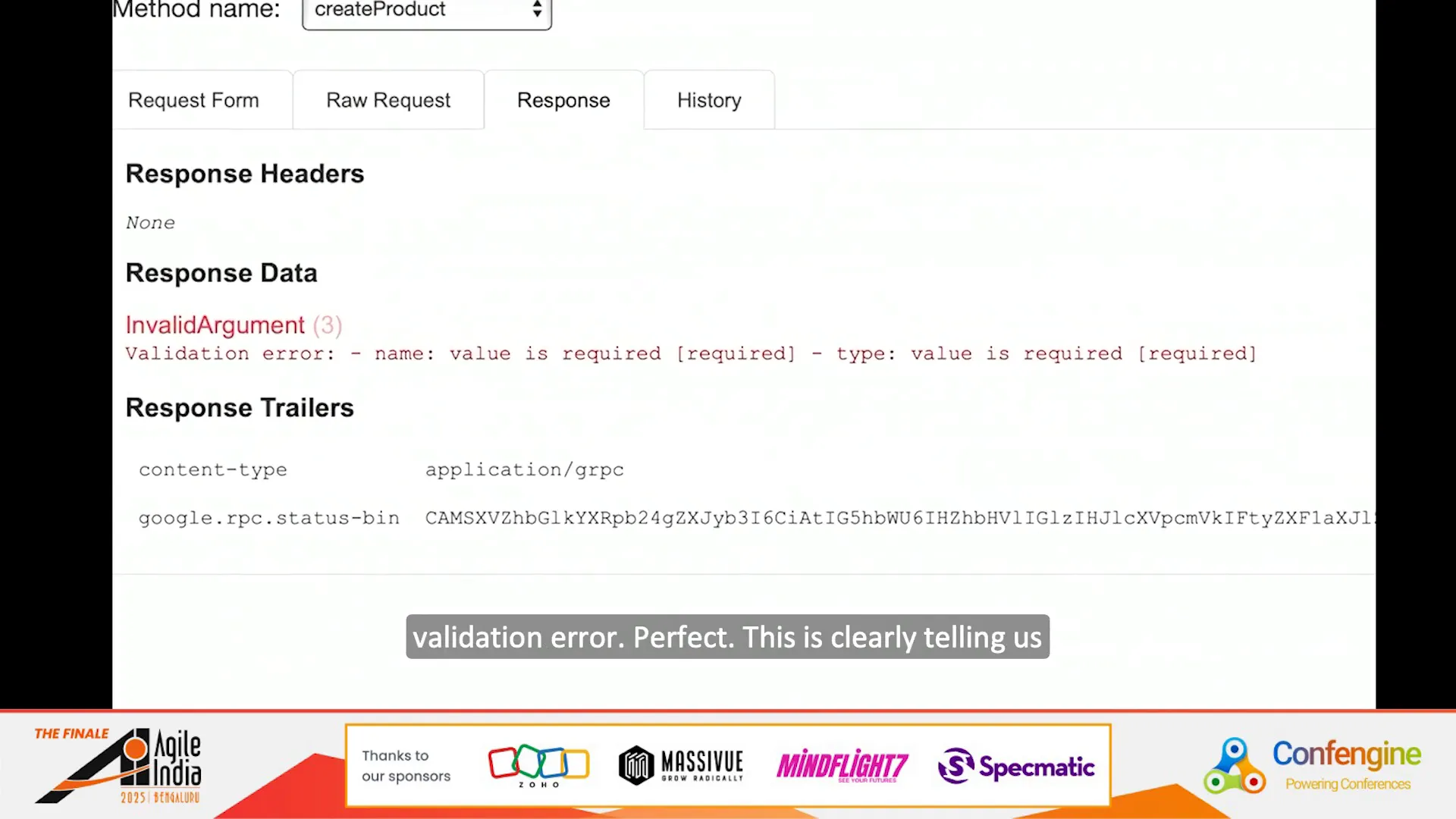
Now, if you try to send a request without these fields, the system returns a validation error, enhancing the developer experience by catching issues early. But what if business requirements change suddenly?
Handling Changing Business Requirements in gRPC
Imagine a product manager demands that products can only be created in inventory packs of three. A developer adds custom validation logic in the service implementation to enforce this:
“Inventory can only be multiples of three.”
This logic works well and rejects invalid inputs at runtime. However, the proto file remains unchanged and doesn’t reflect this new constraint. This mismatch causes confusion:
- The proto file does not communicate the new rule.
- Consumers relying on the proto file won’t get early feedback.
- Errors surface only at runtime, degrading developer experience.
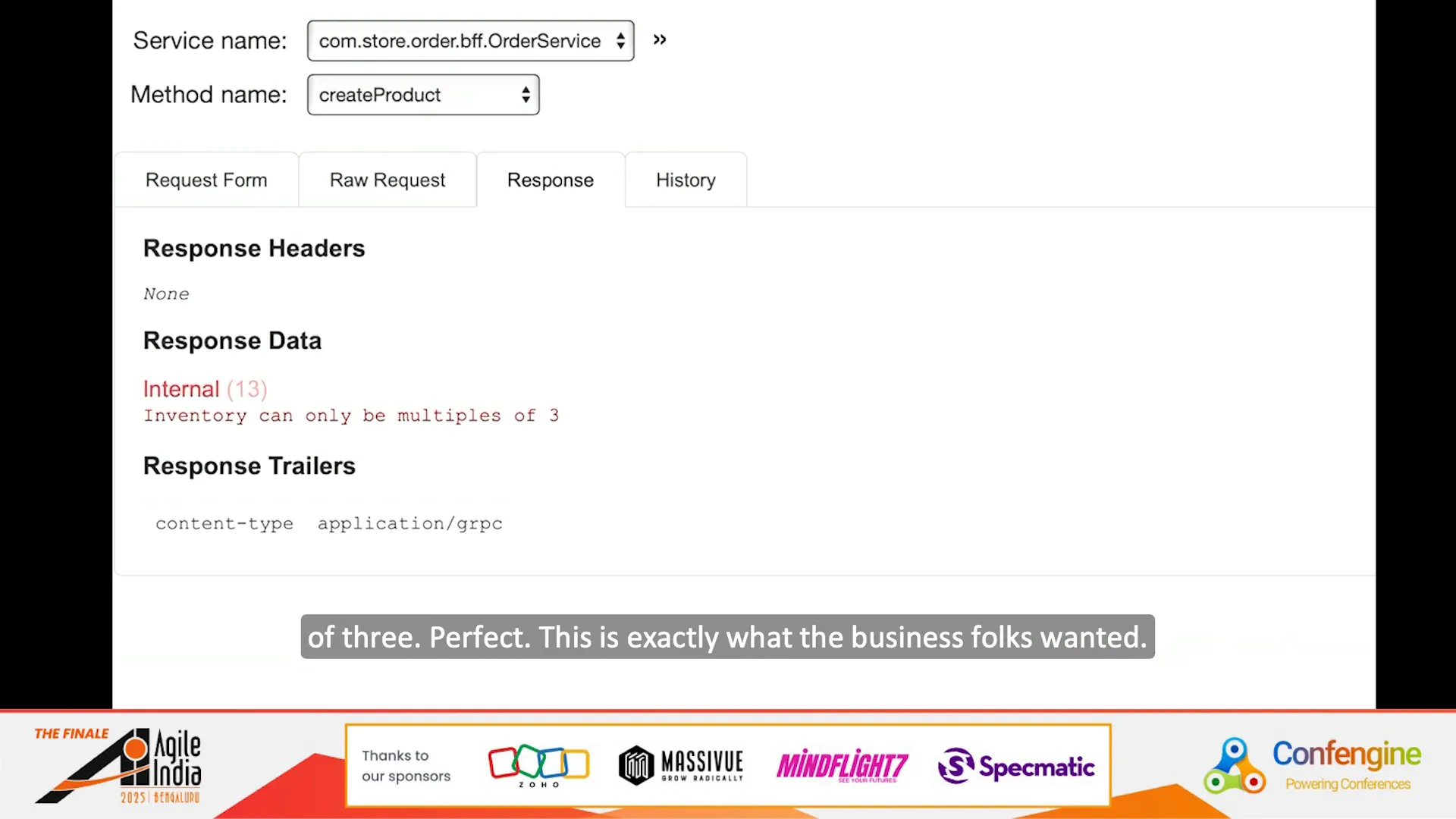
How can this gap between specification and implementation be detected early? The answer lies in contract testing.
Contract Testing: Closing the Gap Between API Spec and Implementation
Contract testing validates that an implementation adheres to its API specification. Using frameworks like Specmatic, developers can write contract tests that automatically verify whether the live service complies with the proto or OpenAPI contracts.
Contract tests can be configured with minimal code, specifying the service endpoint and any dependencies to stub out. Specmatic then generates and executes tests to exercise the API against the contract.
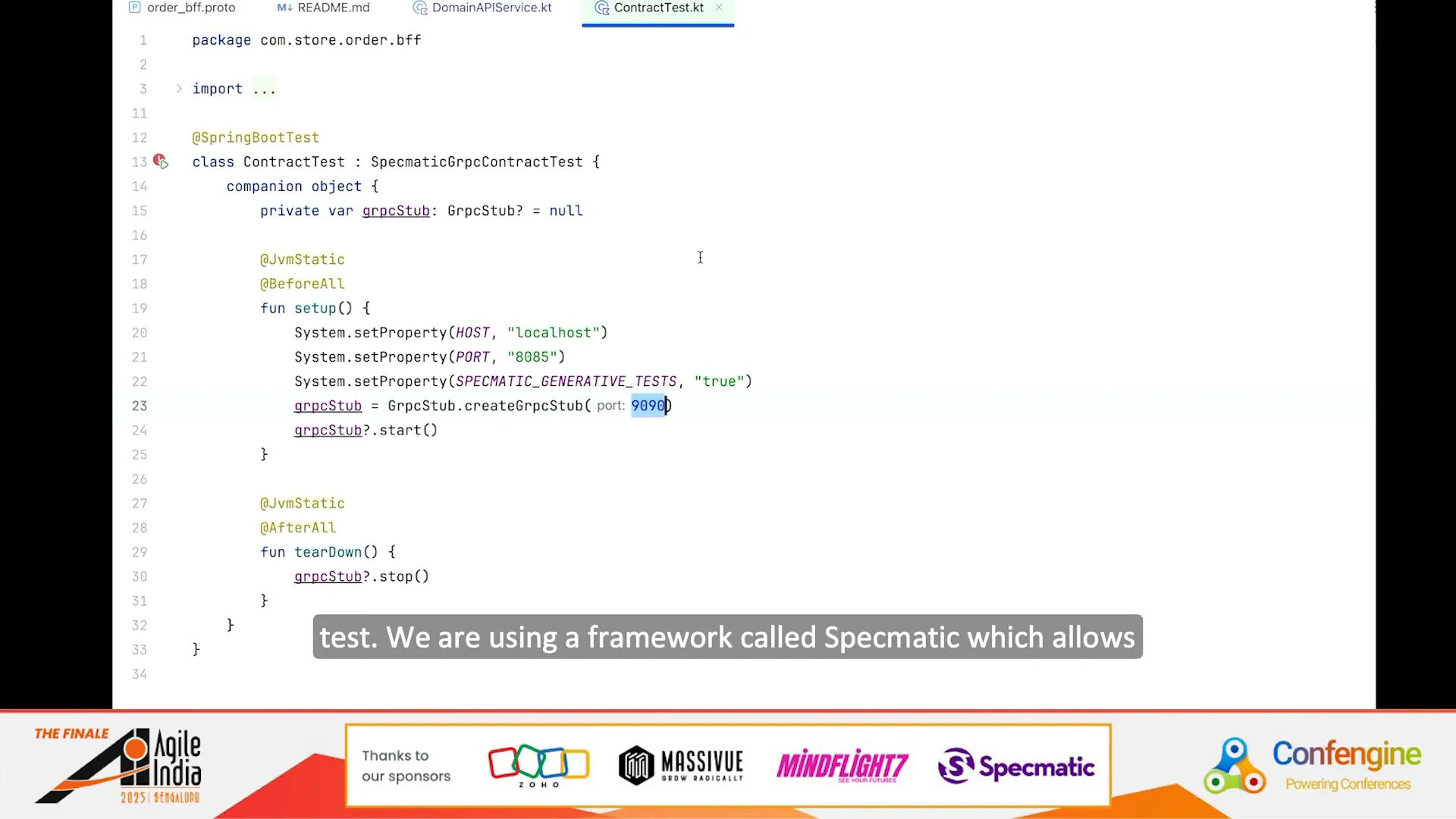
Running these tests on the gRPC service described earlier reveals mismatches, such as the inventory multiples of three constraint not reflected in the proto file:
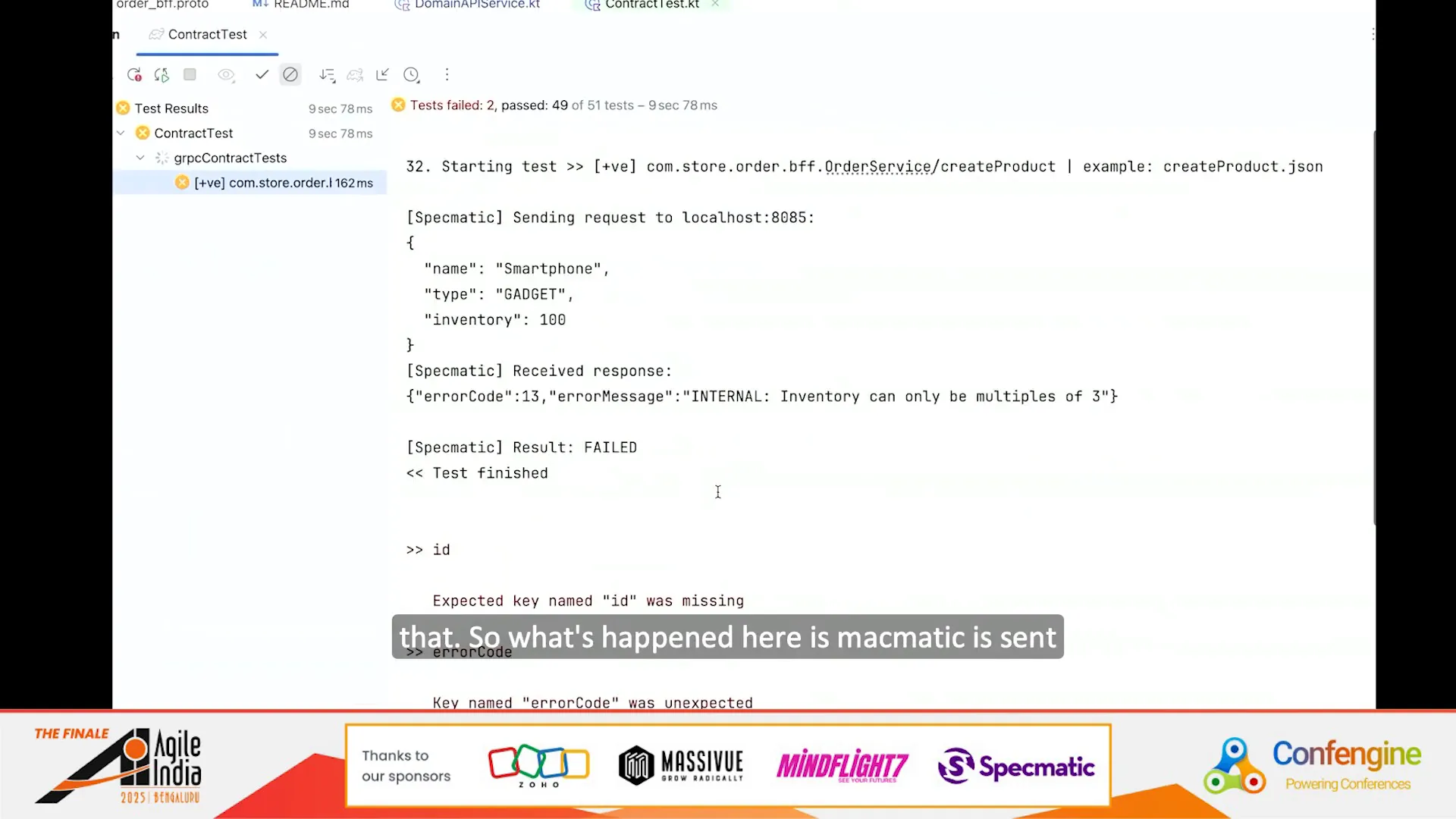
These failures provide immediate feedback to developers, highlighting inconsistencies and preventing downstream consumer issues. This approach dramatically improves developer experience by catching contract violations early.
Lessons from gRPC
While gRPC provides some contract safety features, it doesn’t guarantee perfect alignment between specification and implementation. Add-on libraries and contract tests are essential to provide a robust developer experience and prevent surprises.
REST and OpenAPI: Are They Any Better?
REST and OpenAPI have been industry standards for over a decade, with mature tooling for code generation and documentation. One might expect fewer surprises using these technologies, but reality is more nuanced.
OpenAPI Round-Trip Tooling Issues
OpenAPI tooling includes:
- Codegen: Generate server boilerplate code from OpenAPI specs.
- Docgen: Generate OpenAPI specs from server code.
Consider a round-trip test:
- Start with a simple OpenAPI spec for a product creation API.
- Generate a Spring Boot server application using codegen.
- Run the application and confirm it works.
- Download the generated OpenAPI spec from the running app using docgen.
- Compare the original and generated specs.
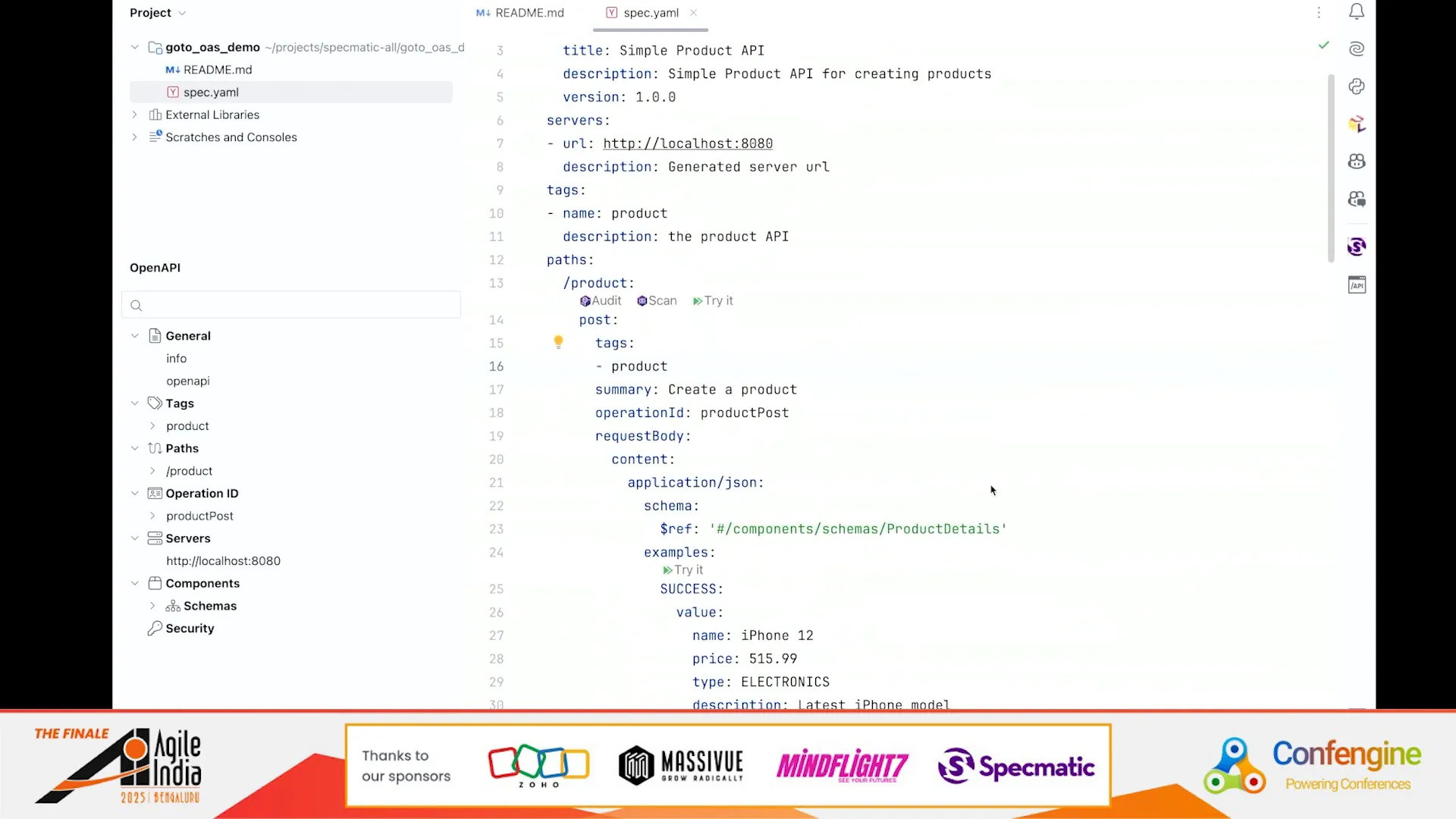
Unfortunately, the two specs differ:
- Example data in requests and responses is lost in the generated spec.
- Schema composition using
allOfis flattened and duplicated, losing semantic clarity.
This breaks the expectation that codegen and docgen round-trip perfectly. Such inconsistencies undermine trust in tooling and complicate API governance.
Implications for API Governance
When tooling cannot reliably maintain contract fidelity, teams face:
- Increased manual effort to keep specs and implementations aligned.
- Higher risk of contract mismatches and integration bugs.
- Reduced confidence in automation pipelines.
Therefore, while OpenAPI is a strong industry standard, its tooling ecosystem has limitations that affect developer experience and API governance.
The Promise of AI-Driven API Development
Emerging technologies like Generative AI and Large Language Models (LLMs) offer promising new approaches to API development and governance.
AI Building Running Applications from OpenAPI Specs
Imagine feeding OpenAPI specifications of an order service and its downstream product service dependency to an AI agent and asking it to generate a fully running Order Service application.
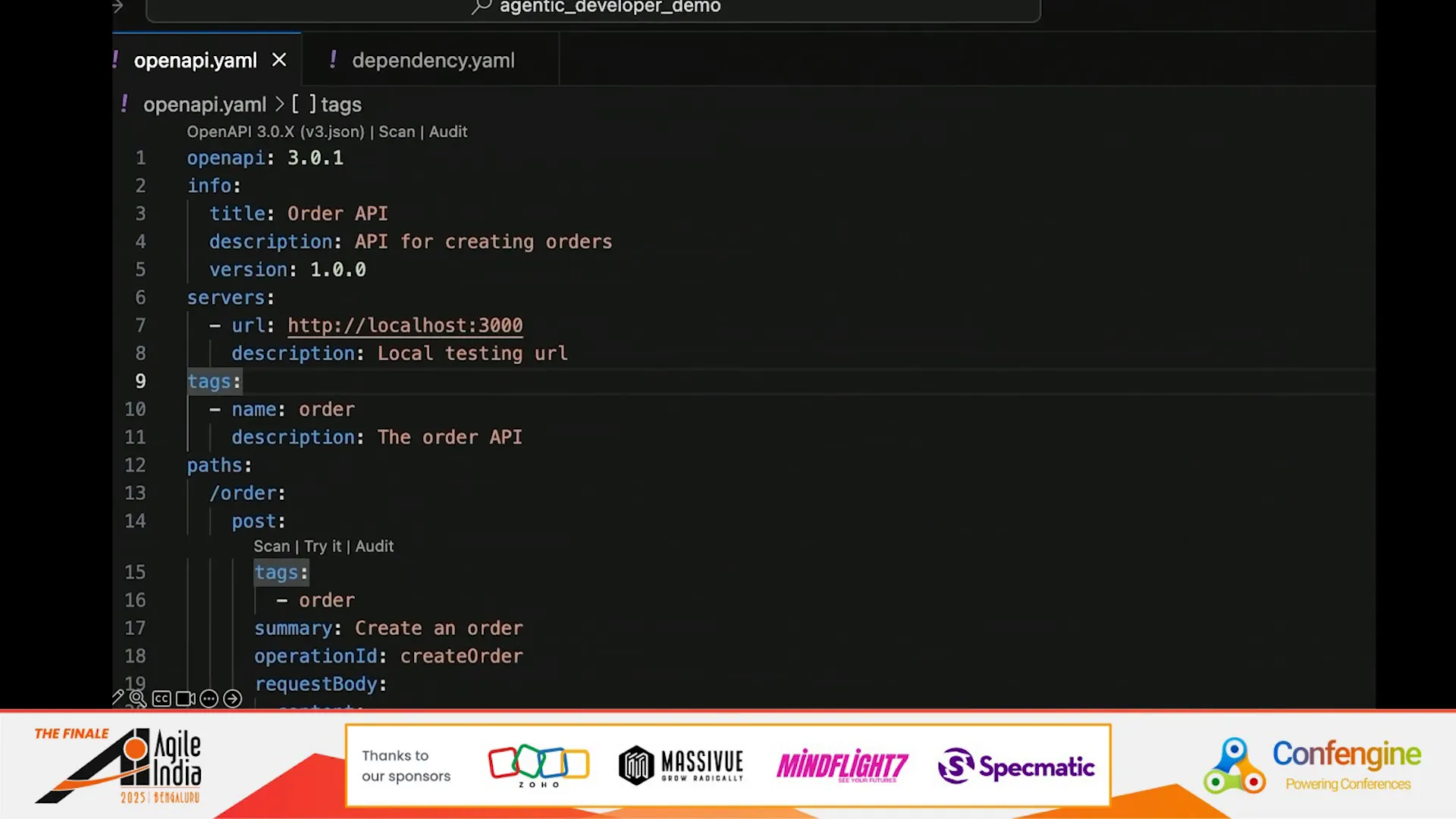
The AI agent uses LLM capabilities combined with tooling to:
- Generate Node.js application code.
- Start the application and dependency stubs.
- Run contract tests automatically.
- Iteratively fix errors based on test feedback.
Initially, some contract tests fail due to missing validation (e.g., discount coupon field accepting null when it shouldn’t). The AI learns from this feedback and updates the implementation. After a second pass, all tests pass, indicating adherence to the OpenAPI spec.

This demonstrates a much better developer experience where AI, combined with contract tests, can produce robust APIs with minimal human intervention, leveraging continuous feedback to correct mistakes.
Current Limitations and Future Potential
While exciting, this approach is still in early stages and cannot be fully relied upon yet. However, it points the way to future API development workflows where:
- AI accelerates code generation.
- Contract tests provide deterministic feedback.
- Developers focus on higher-level design and business logic.
Contract-Driven Development: A Practical Approach to Shift Left API Governance
Until AI-driven development matures, organizations need practical strategies to improve API governance and developer experience. One such approach is contract-driven development, which emphasizes API-first design and rigorous contract testing early in the lifecycle.
API-First and Specification as Code
Contract-driven development starts with defining machine-readable API specifications using standards like OpenAPI, AsyncAPI for Kafka, or GraphQL schemas. This specification acts as the single source of truth for both providers and consumers.
To prevent specs from becoming lost or outdated, treat them as code:
- Store API specs in Git repositories.
- Use pull requests for changes with linting and validation.
- Collaborate between providers, consumers, architects, and QA teams.
Backward and Forward Compatibility Testing
A key governance aspect is ensuring changes do not break existing clients (backward compatibility) or prevent providers from deploying ahead of their dependencies (forward compatibility).
Backward compatibility means:
- Old clients continue to work with new API versions.
- Expansions (adding optional fields) are usually compatible.
- Contractions (removing fields or making fields mandatory) can break compatibility.
Testing backward compatibility early avoids costly late-stage integration failures and forced upgrades.
Dynamic Contract Testing with Specmatic
Specmatic offers a unique approach by generating both:
- Contract tests from API specs.
- Service virtualization stubs based on the same specs.
To test backward compatibility:
- Run the new API spec as a stub server.
- Run contract tests generated from the old spec against this stub.
- If all tests pass, the new spec is backward compatible.
This dynamic analysis goes beyond static diffing, supporting even API standard upgrades (e.g., OpenAPI 3.0 to 3.1).
Accelerating Development Through Early Feedback
Once the spec is merged into the central contract repo, consumers can immediately start development using the stubbed API locally, without waiting for provider implementations.
Providers can adopt a contract-test-driven development approach, where:
- Contract tests initially fail.
- Developers implement functionality until all contract tests pass.
This ensures the implementation adheres to the contract from day one, saving time and reducing surprises.
Integration with Continuous Integration Pipelines
Specmatic and similar tools integrate seamlessly into CI/CD pipelines, enabling:
- Automated contract testing.
- Stub-based testing for consumers.
- Early detection of contract violations before deployment.
This approach shifts validation left to design and development stages, improving quality and reducing cycle time.
Enhanced Collaboration and Governance
Contract-driven development fosters better communication between API providers and consumers by:
- Using GitOps workflows for spec changes and reviews.
- Automating notifications to consumers on contract changes.
- Preventing trivial changes from breaking consumers unexpectedly.
These practices improve parallel development velocity and reduce coordination overhead.
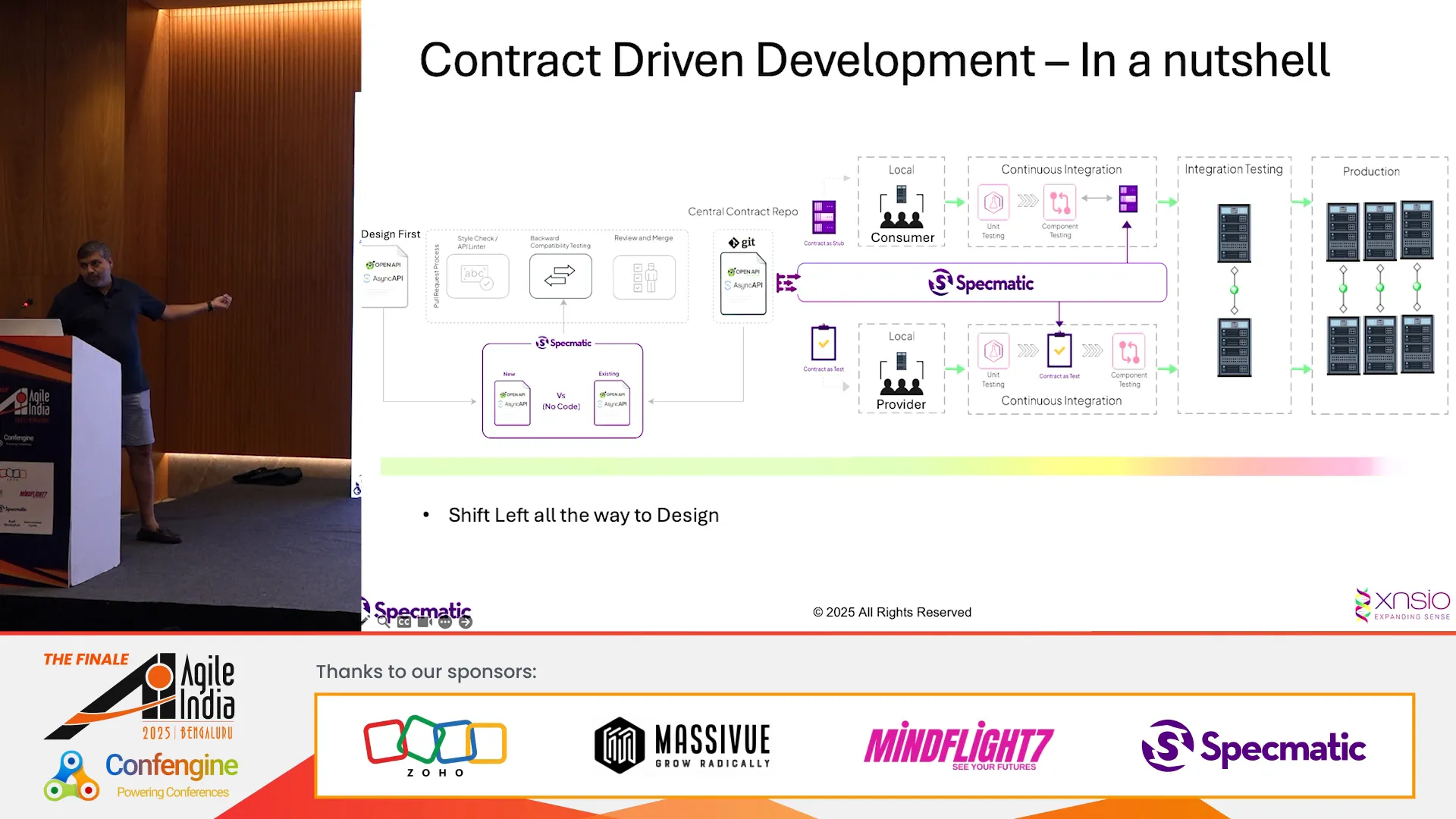
Why Existing Tools Like Pact May Not Suffice
Before adopting contract-driven development, many teams explore consumer-driven contract testing tools like Pact. While Pact pioneered contract testing, it has limitations:
- Code-first and consumer-driven: Developers must write consumer-side tests and learn Pact’s DSL.
- Broker dependency: Pact requires a central broker server to orchestrate contracts, adding operational overhead and a critical dependency.
- Sequential development: Consumer-driven contracts enforce a sequential workflow, limiting parallelism.
- Multiple contract artifacts: Teams must maintain both OpenAPI specs and Pact JSON files, causing duplication and multiple sources of truth.
- Lack of third-party adoption: Contract testing external services via Pact is impractical since third parties rarely adopt it.
These challenges make Pact less viable for organizations seeking seamless, scalable API governance across diverse teams and external dependencies.
Essential Criteria for a Practical API Contract
Based on experience, an effective API contract should:
- Be based on an industry-standard, machine-readable specification (e.g., OpenAPI, AsyncAPI).
- Be programming language agnostic to support polyglot environments.
- Be friendly to all stakeholders, including developers, architects, QA, and product managers.
- Have a strong ecosystem and tooling support to evolve with organizational needs.
- Provide early design-time feedback to catch issues before coding.
- Enable no-code or low-code workflows to reduce learning curves.
- Support independent, parallel development and deployment by providers and consumers.
- Integrate natively with CI/CD pipelines for continuous validation.
Meeting these criteria improves developer experience, reduces risks, and accelerates delivery.
Real-World Challenges Driving the Need for Shift Left API Governance
In large-scale microservices and micro-frontend architectures, common challenges include:
- Long cycle times (often 5-6 months) due to late-stage integration issues.
- High bug rates in production and pre-production environments caused by contract mismatches.
- Out-of-sync API specifications and implementations despite CI automation.
- Limitations and bugs in code generation and documentation tools.
- Complexities in managing test data and external third-party dependencies.
- Surprises during performance and chaos testing phases.
These pain points motivated the creation of new approaches and tools like Specmatic to streamline API governance.
Introducing Specmatic: Bridging the Gap
Specmatic is an open-source tool designed to bring contract-driven development to life by:
- Using a single API specification as the source of truth for both contract testing and service virtualization.
- Eliminating the need for separate consumer-driven contract files.
- Providing a no-code experience accessible to all stakeholders.
- Supporting parallel development workflows.
- Offering CLI and CI integration for seamless pipeline adoption.
Specmatic embodies the principles of collaboration, simplicity, and developer-centric design, making it a powerful solution for modern API governance.
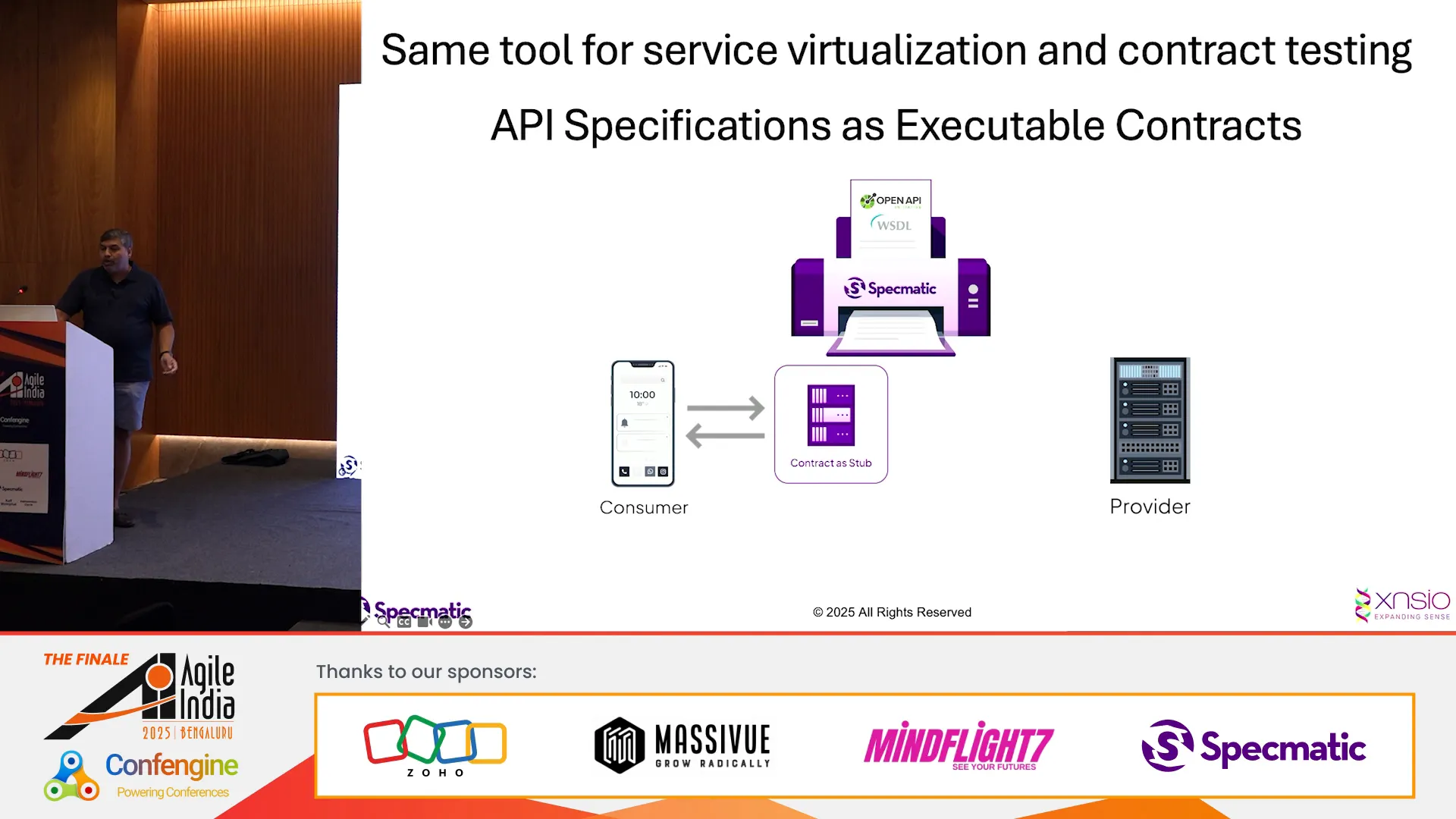
Summary: The Path to 10x Developer Experience with Shift Left API Governance
To summarize, achieving 10x developer experience and accelerating delivery cycles requires rethinking API governance:
- Start with API-first design: Define clear, machine-readable API contracts collaboratively.
- Treat API specs as code: Use Git repositories with pull requests, linting, and backward compatibility checks.
- Leverage contract testing: Automatically validate implementations against contracts early and continuously.
- Adopt service virtualization: Use stubs generated from specs to enable parallel development and testing.
- Integrate with CI/CD: Automate contract validation and testing in pipelines.
- Embrace collaboration and transparency: Notify consumers of changes, and maintain a single source of truth.
- Explore AI assistance: Use AI and LLMs combined with contract testing for automated, robust code generation.
By embedding these practices, organizations can reduce wasted effort, eliminate late surprises, and foster innovation while maintaining robust API governance.
Frequently Asked Questions (FAQ)
What is “shift left” in API governance?
Shift left means integrating API governance activities earlier in the software development lifecycle, such as during API design and development, rather than waiting until testing or release stages. This proactive approach helps catch issues sooner, reducing risks and delays.
How does contract-driven development improve developer experience?
Contract-driven development ensures that API contracts are the single source of truth and that implementations are continuously validated against these contracts. This reduces guesswork, prevents integration failures, and provides immediate feedback, making development faster and less error-prone.
Why is backward compatibility important in API governance?
Backward compatibility ensures that existing clients continue to function correctly when APIs evolve. Maintaining it prevents breaking changes that could disrupt users or dependent systems, especially in fast-paced, independently deployable environments.
How does Specmatic differ from consumer-driven contract testing tools like Pact?
Specmatic uses a single API specification for both contract testing and service virtualization, eliminating the need for separate consumer-driven contracts. It supports parallel development, has a no-code approach, integrates natively with CI/CD, and avoids the operational complexities of Pact’s broker and DSL.
Can AI fully automate API development today?
AI-driven API development shows promise but is still maturing. While AI can generate code from API specs and learn from contract test feedback, human oversight remains essential to ensure robustness and handle complex business logic.
What are best practices to maintain API specifications?
Best practices include treating specs as code in version control, enforcing linting and validation, using backward compatibility tests during pull requests, collaborating across teams, and integrating contract tests into CI/CD pipelines.
How can service virtualization help in API development?
Service virtualization creates stub implementations of APIs based on specifications, allowing consumers to develop and test against realistic mocks without waiting for providers. This accelerates parallel development and early testing.
What challenges arise from using code generation tools with OpenAPI?
Code generation tools may produce specs or code that diverge from the original, lose examples, flatten schema compositions, or introduce inconsistencies. This undermines trust and complicates API governance, requiring manual fixes or additional validation.
How do I get started with contract-driven development?
Begin by defining clear API contracts using standards like OpenAPI. Store specs in Git repositories, enforce linting and backward compatibility checks, generate contract tests and stubs, integrate these into CI/CD pipelines, and encourage collaboration between providers and consumers.
Where can I learn more about Specmatic and shift left API governance?
Specmatic is open source and has documentation and community resources online. Exploring conference talks, articles, and tutorials on shift left API governance and contract-driven development can provide deeper insights and practical guidance.

